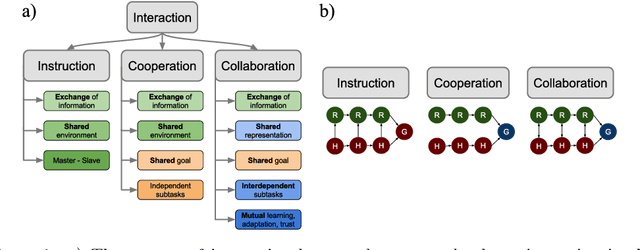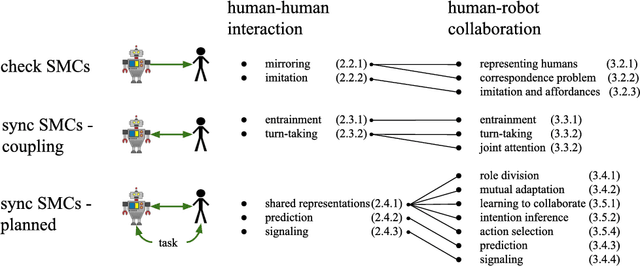Human-Robot Collaboration: From Psychology to Social Robotics
Paper and Code
May 29, 2017



With the advances in robotic technology, research in human-robot collaboration (HRC) has gained in importance. For robots to interact with humans autonomously they need active decision making that takes human partners into account. However, state-of-the-art research in HRC does often assume a leader-follower division, in which one agent leads the interaction. We believe that this is caused by the lack of a reliable representation of the human and the environment to allow autonomous decision making. This problem can be overcome by an embodied approach to HRC which is inspired by psychological studies of human-human interaction (HHI). In this survey, we review neuroscientific and psychological findings of the sensorimotor patterns that govern HHI and view them in a robotics context. Additionally, we study the advances made by the robotic community into the direction of embodied HRC. We focus on the mechanisms that are required for active, physical human-robot collaboration. Finally, we discuss the similarities and differences in the two fields of study which pinpoint directions of future research.
 Add to Chrome
Add to Chrome Add to Firefox
Add to Firefox Add to Edge
Add to Edge